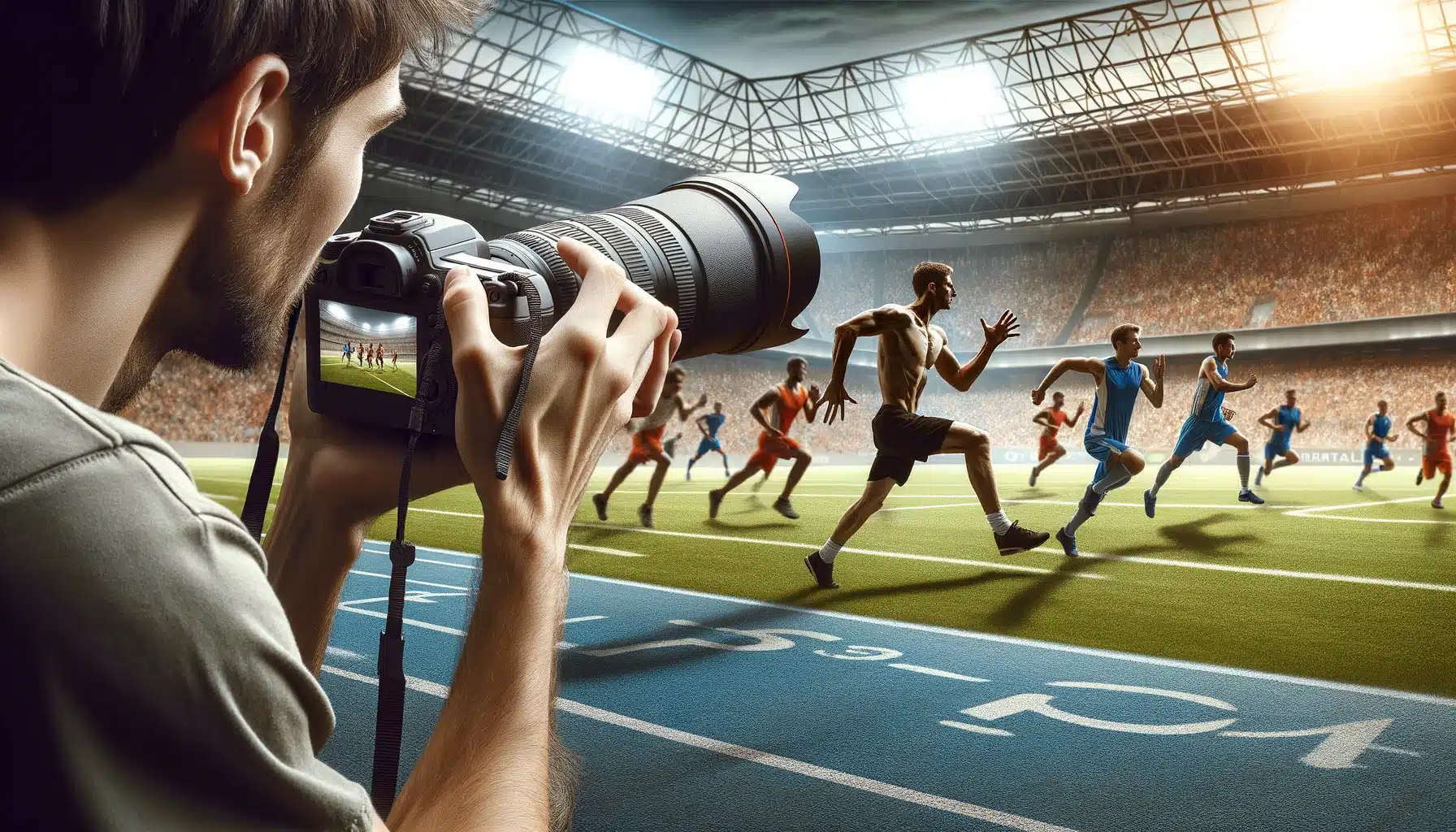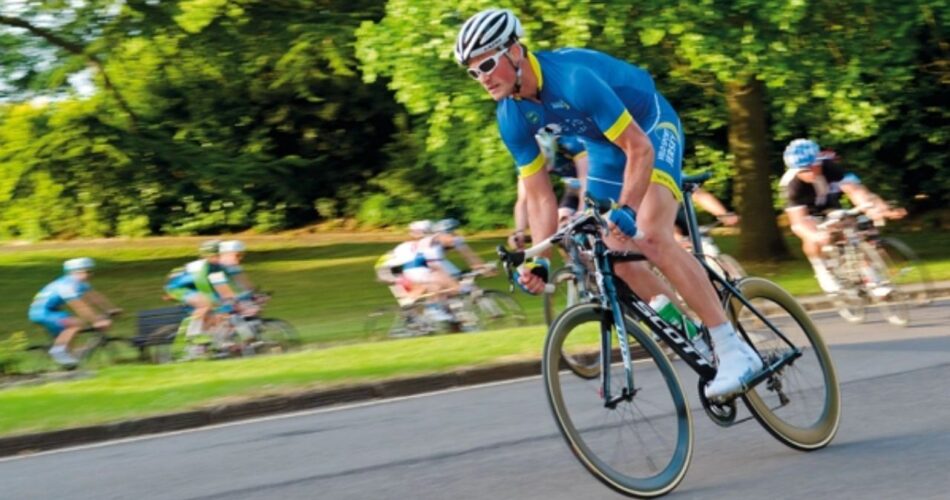Sports photography is one of the most thrilling yet challenging fields of photography. It requires a mix of technical knowledge, quick reflexes, and the ability to adapt to fast-moving action.
Whether you are shooting football, basketball, swimming, or track events, the right camera setup makes all the difference. We will explain step-by-step tips for setting up your camera to shoot anything in sports photography.
We will cover camera settings, equipment choices, and practical tricks that even professionals use to capture iconic sports moments.
- Why camera setup is the most important factor in capturing fast sports action moments?
- What camera modes should you use for fast sports movements and unpredictable plays?
- How fast should your shutter speed be to freeze sports action and avoid blur?
- Why autofocus settings matter and how to configure them for moving subjects?
- What ISO and aperture settings work best in different sports lighting conditions?
- What lenses and focal lengths are most effective for different types of sports?
- Why burst mode and memory card speed are critical in sports photography?
- How does composition, positioning, and anticipation improve your sports photography shots?
- What accessories improve reliability and comfort during long sports shooting sessions?
- Final thoughts: How to set up your camera for success in any sports situation?
Why camera setup is the most important factor in capturing fast sports action moments?

Sports action happens in seconds, and if your camera is not ready, you miss the shot. A good setup ensures that your camera can focus quickly, track subjects, and adjust exposure in changing light.
Studies show that over 65% of failed sports shots are due to wrong camera settings rather than equipment limitations. This proves that knowing how to configure your camera is more important than owning the most expensive gear.
- Proper shutter speed freezes motion.
- Continuous autofocus ensures sharpness.
- Correct ISO helps balance exposure in different lighting.
Without these, even the best lens cannot produce a perfect action shot.
What camera modes should you use for fast sports movements and unpredictable plays?
Sports demand quick adjustments, and shooting in the right mode helps you stay prepared.
- Shutter Priority (Tv or S mode): Lets you control shutter speed while the camera manages aperture. Best for freezing or blurring motion.
- Manual Mode (M): Preferred by professionals because it allows full control over shutter speed, aperture, and ISO.
- Aperture Priority (Av or A): Useful in sports with consistent lighting, like indoor basketball.
For beginners, Shutter Priority is often the easiest way to start, but professionals recommend Manual Mode for consistency in results.
How fast should your shutter speed be to freeze sports action and avoid blur?

The shutter speed is the most critical setting for sports photography. To freeze motion:
- Football/Soccer: 1/1000 sec or faster
- Basketball/Volleyball: 1/800 sec
- Swimming/Diving: 1/1000–1/2000 sec
- Motorsports: 1/2000 sec or faster
Using a shutter speed slower than 1/500 sec often leads to motion blur. Some photographers use slower speeds intentionally for panning shots, which create a sense of speed.
Example Table: Recommended Shutter Speeds by Sport
| Sport | Minimum Shutter Speed | Ideal Range |
|---|---|---|
| Football | 1/1000 sec | 1/1000–1/2000 sec |
| Basketball | 1/800 sec | 1/800–1/1600 sec |
| Swimming | 1/1000 sec | 1/1000–1/2000 sec |
| Track Racing | 1/2000 sec | 1/2000–1/4000 sec |
Why autofocus settings matter and how to configure them for moving subjects?
Sports photography requires reliable autofocus that can track subjects as they move across the frame. Modern cameras offer advanced autofocus modes:
- AI Servo (Canon) / AF-C (Nikon/Sony): Tracks moving subjects.
- Zone AF or Dynamic AF: Focuses on a group of points, helpful in unpredictable sports.
- Eye/Face Detection AF: Useful for portraits of athletes but less reliable in crowded fields.
Pro tip: Always keep your autofocus set to continuous mode with subject tracking enabled. This ensures your camera doesn’t lose focus when athletes make sudden movements.
What ISO and aperture settings work best in different sports lighting conditions?

Lighting conditions vary widely in sports, from outdoor stadiums to indoor arenas. ISO and aperture must be balanced to maintain exposure without too much noise.
- Daylight Outdoor Sports: ISO 100–400, aperture f/4–f/5.6
- Indoor Basketball or Volleyball: ISO 1600–6400, aperture f/2.8
- Night Stadium Events: ISO 3200–12,800, aperture f/2.8–f/4
High ISO settings increase noise, but modern cameras handle noise much better than older models. Shooting in RAW also allows noise reduction in post-processing.
What lenses and focal lengths are most effective for different types of sports?
The right lens gives you the reach and flexibility to capture action at different distances.
- 70-200mm f/2.8: The most popular sports lens, ideal for indoor and outdoor use.
- 300mm f/2.8 or 400mm f/2.8: Perfect for field sports like soccer, rugby, or cricket.
- 24-70mm f/2.8: Great for courtside action like basketball or volleyball.
Zoom lenses offer flexibility, while prime lenses deliver sharper images and better low-light performance.
Why burst mode and memory card speed are critical in sports photography?
Sports are fast, and a single shot may not capture the peak action. Burst mode (continuous shooting) allows you to take multiple frames per second.
- Modern cameras like the Canon EOS R7 or Sony A9 II can shoot 20–30 fps.
- Fast memory cards (UHS-II or CFexpress) are necessary to handle the data.
For example, a 20 fps burst at 32MP resolution produces almost 640 MB of data every second. Without a fast card, your camera will slow down.
How does composition, positioning, and anticipation improve your sports photography shots?
Even with perfect settings, your photos can look flat without good composition and timing. Positioning yourself at the right place matters.
- Shoot from low angles to add drama.
- Frame athletes with background elements like stadium crowds for context.
- Anticipate the peak moment (a dunk, a goal, or a sprint finish).
Professional sports photographers often study the sport they are shooting so they can anticipate action before it happens. Anticipation is often more important than reaction.
What accessories improve reliability and comfort during long sports shooting sessions?
Accessories help you stay ready and comfortable during long events.
- Monopod: Supports heavy telephoto lenses.
- Extra Batteries: Sports shooting drains power quickly.
- Rain Covers: Essential for outdoor events.
- Ear Protection: Helpful in motorsports or shooting near loud stadiums.
Investing in these tools ensures you can focus on shooting rather than struggling with discomfort or technical issues.
Final thoughts: How to set up your camera for success in any sports situation?
Sports photography is all about preparation. By setting the right shutter speed, autofocus, ISO, and aperture, you maximize your chances of capturing sharp, exciting moments.
The combination of fast lenses, burst mode, and anticipation skills transforms good photos into great ones. With practice, even amateur photographers can achieve professional-quality results.

